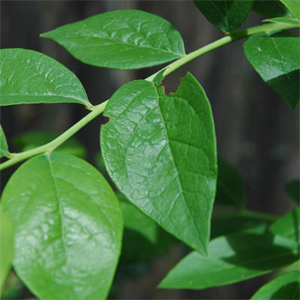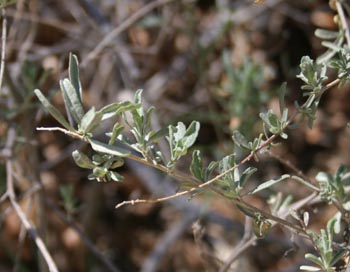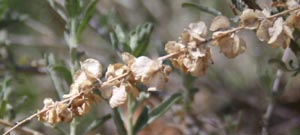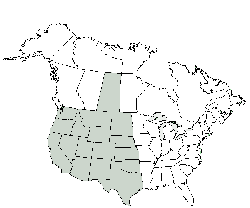Blueberry
Common Names:
Northern highbush blueberry, southeastern highbush blueberry, Maryland highbush blueberry, black highb ush blueberry, American blueberry, New Jersey blueberry, rabbiteye blueberry, swamp blueberry, tall huckleberry, mayberry, whortleberry
ush blueberry, American blueberry, New Jersey blueberry, rabbiteye blueberry, swamp blueberry, tall huckleberry, mayberry, whortleberry
Other than eating blueberry muffins and pancakes, I never thought much of the plant. My guess was that blueberries were farm plants and that was it. Then in my early twenties I was trout fishing in Quebec just north of Alma. We were fishing small lakes loaded with native brook trout. I walked down to the first lake and was met with about 2 acres of blueberry plants with ripe fruit. I asked my brother-in-law how they “got there”. Right then I learned a lesson – blueberry plants, in this case high bush blueberry are native plants to North America. That week I dined on brook trout and blueberries each evening and blueberry pancakes with bacon each morning – a great way to live.
Identification:
Blueberry bushes can be small to large shrub like plants. Highbush blueberry plants can grow over 6′ tall with a similar spread. Twigs are yellow-green (reddish in winter) and covered with small wart-like dots. Leaves are deciduous, alternate, simple, elliptic or ovate, 1 to 3½ inches long and slightly waxy above. As the pictures indicate, the leaves are usually a good healthy green. In fall the leaves can turn a vibrant red.
The white or pink-tinged flowers are small and urn-shaped with 5 petals, and occur 8 to 10 per cluster. Flowering occurs February to June, sporadically in the southern portion of its range; fruiting occurs April to October, about 62 days after flowering. Fruits are ¼ – ½” blue-black berries with many seeds.
Habitat: The most common native habitat is in moist or wet peat of moderate to high acidity – in and around marshes, swamps, lakes and flood-prone areas. There are varieties that also grow in drier areas such as dunes and barrier beaches, rocky hillsides, oak woods, and pinewoods.
Location:
With the exception of deserts etc. some form of blueberry can be found somewhere in North America as long as the habitat is favorable. Additionally, because of people using the plants for home, garden or farm the various species have become transplanted wide and far. Birds eating the fruit then disperse the seeds for more plants. The gist here is that it is possible to locate blueberry plants if you look.
Edible:
The berry is the edible part of this plant. Blueberries can be eaten raw, smoke-dried, sun-dried, boiled, and baked in a wide variety of culinary ways. They have one of the highest concentrations of iron of the temperate fruits. Additionally, blueberries are high in anti-oxidants.
Check out our blueberry recipes
Notes of interest:
Blueberries provide important summer and early fall food for numerous species of game birds, songbirds, and mammals – my fight with local animals is a testament to this fact!!
More than 50 blueberry varieties have been developed, primarily for commercially valuable fruit characteristics and seasonality.
Blueberry Growing Guide:
Blueberries combine delicious healthy fruit and ornamental value to the garden. This native plant is easy to grow and requires little care. If a few basic steps are followed your blueberry plants can last for years.
In order for bushes to grow properly, have fruit set and mature and have the plants flourish, you will want to provide as much sunlight as possible. My plants currently have a good 10 hours of sunlight from spring into fall.
These native plants do best in slightly acidic soil, somewhere between a pH of 5.5 and 6.5. When you plant blueberries, make sure you add plenty of peat moss. It will provide a great pH level to start as well as setting a good lose soil for the roots to spread. A periodic feeding regime with an acidic fertilizer such as Mir-Acid is good. I do not believe Mir-acid lowers soil pH but my blueberries do well. If after testing your soil pH it is still too high try sulphur, ammonium sulfate or iron sulfate.
Blueberries do best with a 2-4″ mulch over the roots to conserve moisture, prevent weeds and add organic matter. Bark mulch, acid compost, sawdust, grass clippings, etc. all work well. Repeat every other year.
Do not plant blueberry bushes in wet areas of your property or in clay based soils that will hold water and slow drainage. Blueberries need adequate water, especially when the fruit is maturing you will need to make sure there is plenty of water, if not the fruit will shrivel on the plant. This is what happened to my crop in 2012 when the U.S. experienced drought conditions
Blueberries are like many other fruiting plants, in most cases a single plant will not “self-pollinate”. Most, if not all good gardening guides will tell you to plant two different varieties for proper pollination.
For proper growth, plant blueberries 4-5 feet apart.
My big fight of the year is when the fruit begins to ripen. Maturing blueberries attract birds and squirrels from all over. The only way I know of keeping the fruit is to cover with fine-meshed deer netting. I tack the ends down to the ground to keep animals from getting under the netting to feed. I have walked out too often to find a northern cardinal or gray squirrel trying to get out of the net. When winter sets in upstate New York, rabbits will eat the young branches of blueberry plants. In my area eastern cottontail rabbits are a pain. In a few days they can chew a young plant to the ground. I surround my blueberry plants with chicken wire. This protects the plants.
Blueberry Benefits
Heart health
In a study published in the International Journal of Food Sciences and Nutrition, blueberry supplementation in mice with high cholesterol reduced their risk factors for atherosclerosis. Those who took the extract noted a 29 percent reduction in total cholesterol, with bad cholesterol dropping by 34 percent and good cholesterol rising by up to 40 percent, despite consuming a high-fat diet. In addition, triglycerides – a fat that turns normal cells into fat cells – and homocysteine – which causes inflammation in arterial walls – were both reduced by half.
Excellent references and information in growing blueberries:
Local County agents are listed in the phone book or can be looked up online, call up and ask questions
University of Maine – great article with video instructions
Atlee Burpee & Co – what I consider the best seed and plant company around (with a great history)



